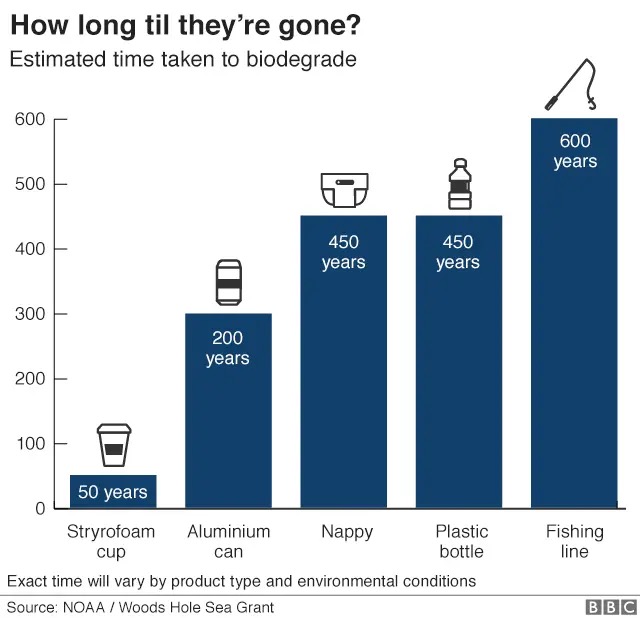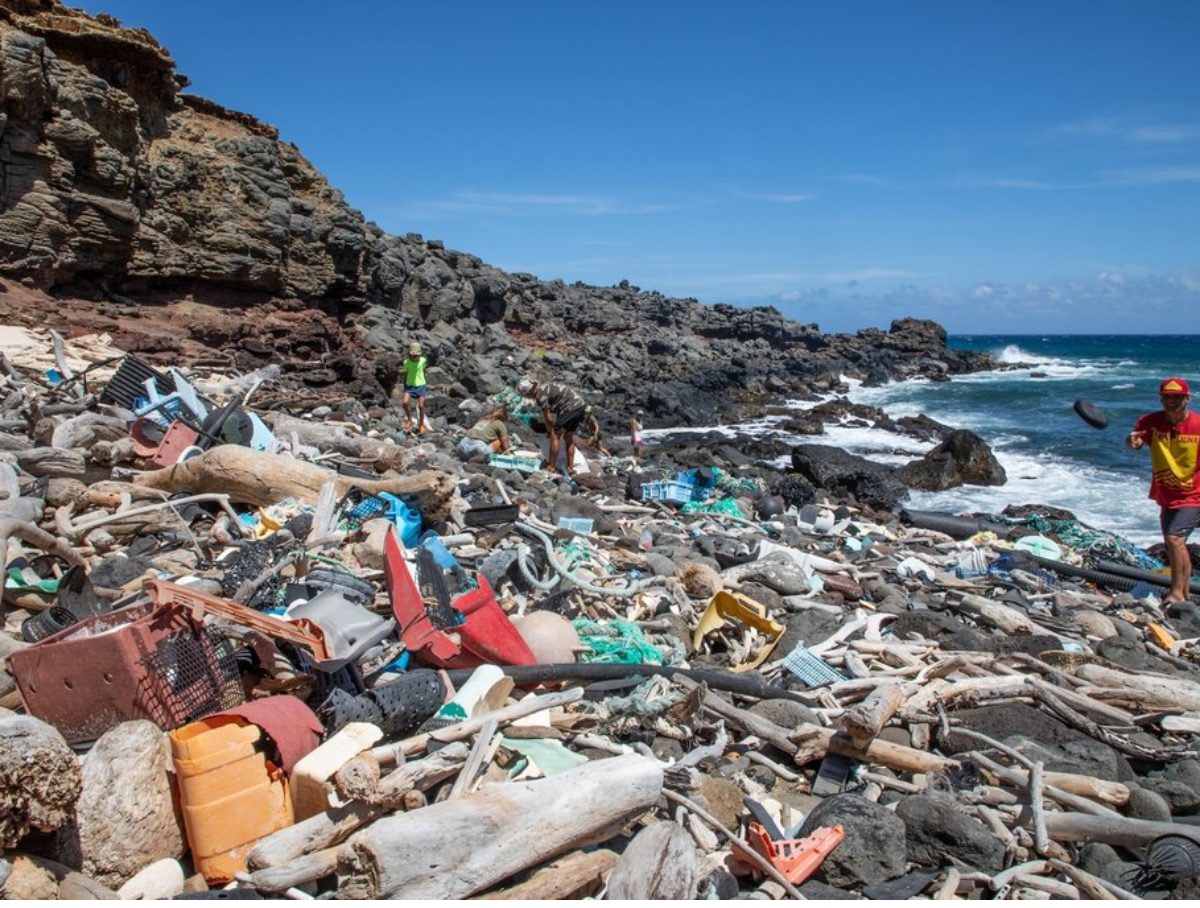We are so used to single-use plastics that it’s hard to remember a time without them. But their use is relatively new. The use of single-use plastics in the United States dates back to the mid-20th century when convenience and affordability became driving factors in consumer culture. The metal lunchbox has been replaced with a Burger King bag filled with plastic wrappers, straws, coated cups, and plastic silverware, most of which ends up in a landfill. Even if it doesn’t, did you know that it takes 50 years for a Styrofoam cup to biodegrade? Or that for a plastic bottle or a diaper, it takes 450 years?

Who cares? If we’re honest, most people don’t. Many say they do, but when it comes to their actions, it doesn’t show.
It’s a Modern Problem
As late as the 1950s, single-use plastic (or any plastic) was relatively rare. In 1950, 2 million tons of plastic were being produced. By 2019, this had rocketed to 460 million tons. Where does that plastic go? According to MIT Technology Review, only 9% of the plastic ever produced has been recycled, and 19% has been incinerated. That leaves 72% of that 460 million tons on the Earth somewhere. For perspective, this surpasses the biomass of all animals, both terrestrial and marine. Ever seen the life-sized replica of a blue whale at the Museum of Natural History? Just think about that for a moment!
One-third of all plastic is single-use. Perhaps even more terrifying . . .
One paper estimated that the average person consumes five grams of plastic every week—mostly from water. [Ed. Note: This is the equivalent of eating a plastic spoon.] About 95% of the tap water in the United States is contaminated. Microplastics are also widely found in beer, salt, shellfish, and other human foods. Significant quantities of these plastic bits have turned up in common fruits and vegetables, as one recent study in Italy found.
How Not to Be Part of the Problem
Hence Plastic-Free July, a global movement that started as a simple challenge in Western Australia in 2011 and has since grown into a worldwide initiative. The goal of Plastic-Free July is to raise awareness about the impact of plastic pollution on our planet and to inspire individuals and businesses to make conscious choices to reduce their plastic consumption. Participants are encouraged to avoid single-use plastics throughout the month of July and beyond, leading to long-term changes in behavior and habits.
If you are a print shop owner or manager, you have the opportunity for an out-sized impact. A single-use plastic-free culture starts at the top. If you care about reducing single-use plastics, that sets the tone for everyone else in the organization. So what can you do?
- Reduce single-use plastics yourself. You’re the top dog. Your employees won’t, as a whole, value reducing single-use plastics if it’s not a culture set from the top down. Be the example.
- Give employees cool reusable water bottles. Key here is “cool.” Put their names on them. Add the company logo. Why not let them choose their own cool graphics in the form of stickers? Make it something they actually want to use. (According to Earth Island Journal, people in the U.S. throw away more than 60 million plastic water bottles every day. Every day! This in spite of the fact that plastic water bottles take 450 years to decompose and 80% of the plastic water bottles people buy end up in landfills.)
- Add water refill stations. Once you’ve given them reusable water bottles, make it easy to refill them. Sure, employees can use the sink, but the truth is that they are more likely to refill them with a water station (like the ones at the gym). This isn’t a Plastic-Free July solution. It’s a long-term, permanent installation. But isn’t that what Plastic-Free July is all about? Long-term change?
- Offer reusable tote bags. More and more retail locations throughout the United States are banning the use of single-use plastic bags anyway, so give your employees a head start. As with the water bottle, give them something really fun and cool that they actually want to carry around. Plus, if you give them company-branded swag, you get the marketing benefit, too.
- Swap the plastic silverware in the company cafeteria or break room with bamboo and plastic straws with compostable ones. More and more fast food chains are doing it, too! Then offer a compost station where employees can ditch their bamboo silverware rather than it ending up in the landfill along with its plastic cousins.
- Encourage a “bring a bagged lunch” day. Let’s not even try to imagine how many single-use plastics are manufactured and used every day simply so people don’t have to bag a lunch. Or maybe we should think about it. Maybe we should.
Plastic-Free July isn’t about a gimmick to boost the sales of reusable water bottles and compostable straws. It’s about long-term life change to start reversing the terrifying trajectory we’ve already begun.

No, this isn’t one of those famous images of plastic washed up on the shores of Malaysia. It’s from Hawaii.
The problem exists, but we don’t have to be part of it.















Discussion
Only verified members can comment.